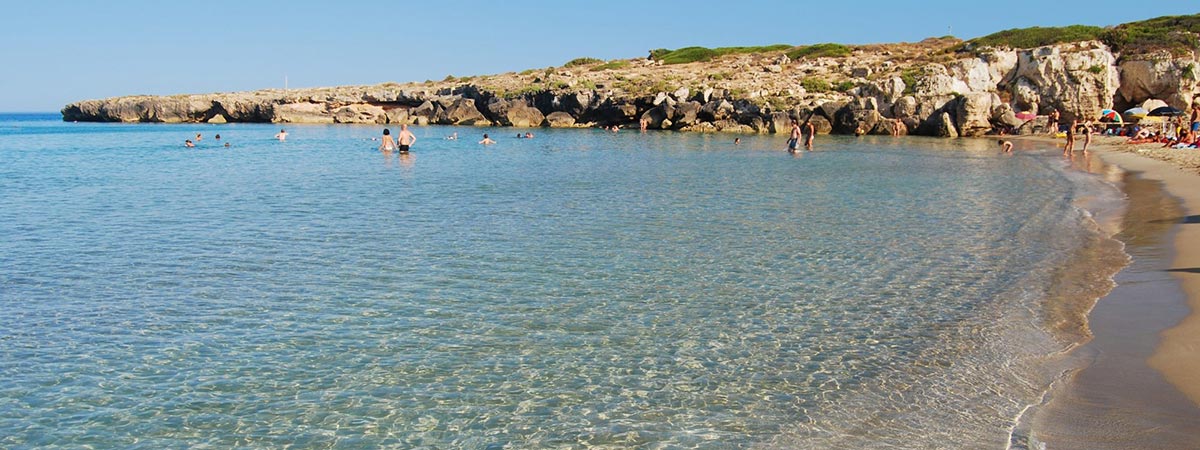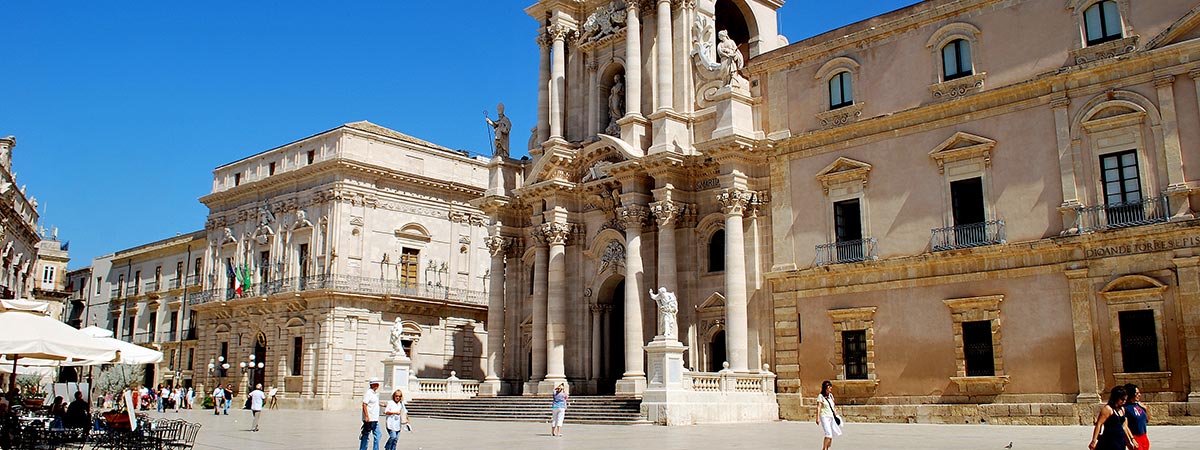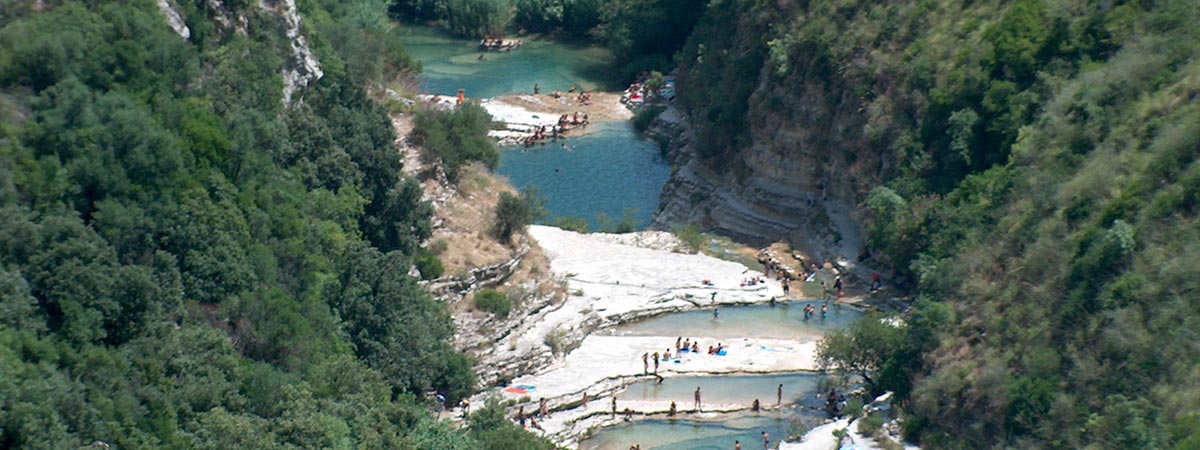| CITY 'ART | |
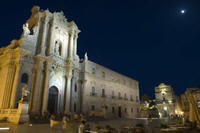 |
SYRACUSE: It is located on the southeastern coast of Sicily and is a city rich in archaeological and naturalistic. Syracuse is located in the mainland part of the scenic island of Ortigia. During its history the city was dominated by the Greeks, Romans, Byzantines, Arabs, Normans and Swabians. The greek theater is the undisputed symbol of the ancient polis. From the artistic point of view, the city offers many monuments and buildings of great importance: the Cathedral, which is located on the island of Ortigia, was built in the sixth century on the Temple of Athena. The Arethusa is located in the heart of Ortigia. Among the most attractive buildings in Syracuse we include: Vermexio and the Archbishop's Palace. |
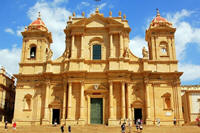 |
NOTO: "Garden of Stone" was declared patrimonio dell’Umanità dall’UNESCO, Place frozen in time and still charming. And 'the city of Sicilian Baroque with its stone beads that adorn the entire city. It is defined by many as one of the most beautiful old towns in Europe. The cathedral dominates the scenery of Noto Baroque and is the symbol of the Val di Noto. After the earthquake of 1990, the Cathedral a few years ago has regained its splendor. The city streets are interspersed with beautiful squares and imposing flights of steps which connect terraces and slopes. |
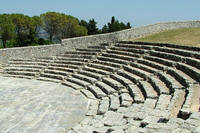 |
PALAZZOLO ACREIDE: Akrai was founded by settlers from Syracuse who regarded the city as an important strategic stronghold. The greek theater testifies to the welfare of the city throughout its history. Like Syracuse, there were numerous dominations that alternated over the centuries: the Roman, Byzantine, Arab, Norman. Palazzolo was recognized of‘UNESCO come patrimonio dell’umanità. An archaeological site among the oldest in the Italian, where you can observe the Sicilian necropolis dating back to the twelfth century. to. C., the ruins of the Greek polis, and later reconstruction at the hands of the Romans and Byzantines. |
| SITI ARCHEOLOGICI | |
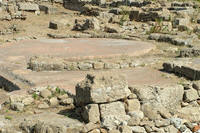 |
Megara: Megara Hyblaea was a colony founded in 728 BC by colonists from Megara from Greece. The site is a few kilometers from Augusta and is a one straordiario example of archaic colonial town plan. Megara Iblea had a necropolis rich of a thousand graves. Among the buildings are distinguished found the archaic sanctuary courtyard with a semicircle, the heroon dedicated perhaps all'ecista Lamia (city founder), the prytaneum, the baths and the Hellenistic remains of the Doric temple. Numerous relics such as the statue of the archaic Dea Madre They are preserved in the Museum Paolo Orsi in Syracuse. |
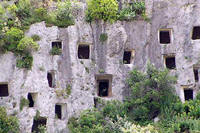 |
PANTALICA: precious archaeological site nestled in the mountains Iblei. It was one of the first towns in eastern Sicily, from 1250 to 700 BC It is close to Sortino on a plateau characterized by canyons created by the river Anapo and Calcinara. Pantalica is part of a scenario of about eighty acres bordered by two large quarries, crossed by two rivers. Pantalica presents throughout its territory a necropolis consisting of thousands of tombs. Since 2005 the site was adjacent to the old town of Syracuse and was recognized heritage of 'UNESCO. |
| RAPPRESENTAZIONI CLASSICHE | |
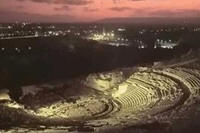 |
TEATRO GRECO: structure that dominates the scenery archaeological Syracuse. It is the largest example of theater of the West greek. Almost all part built theater was demolished during the reign of Charles V to reuse the stones in the erection of the great bastions that were to transform the Ortigia in a mighty fortress. The theater has been created by the Greeks in the rocky cliff where the plateau Epipolae faces toward the coastal plain. Even today, they are played by theater classic features original choral lyricism. |
| MUSEI | |
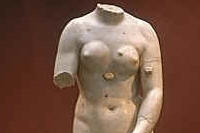 |
MUSEUM PAUL ORSI: defined as one of the main archaeological museums in Europe. Located in Viale Teocrito 66 Syracuse, the museum presents prehistoric finds and Greek and Roman occurred in the Syracuse and the rest of Sicily. PALACE MUSEUM BELLOMO: It is situated in Ortigia in Via Capodieci 16. The exhibition illustrates the cultural and artistic history of the city and its territory, collects objects and materials from churches and convents and private donations. The Annunciation 'by Antonello da Messina and the' Burial of Saint Lucia 'by Caravaggio are stored in the Gallery. |
| RISERVE NATURALI | |
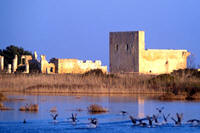 |
VENDICARI: is a green oasis established in 1984. It is located exactly between Noto and Marzamemi. In the reserve you can visit the typical Mediterranean vegetation that makes this place a treasure and natural fauna of the most important in Italy. Vendicari annually it serves as a resting place for many species of birds during their migratory movements. The tuna, old factory for fish processing until the Second World War, and the Tower Sveva are the symbols of the oasis. Vendicari also houses a necropolis dating from the Byzantine era consists of graves, churches and a small urban center. |
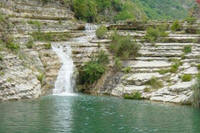 |
CAVAGRANDE: It is a unique natural spectacle in all of Sicily. Cavagrande is a canyon about 10 km long along its path is crossed by paths of water beautiful and unspoiled. The nature reserve Cavagrande is in the heart of the Monti Iblei up to the coast of the coast of Avola. The presence of trails to reach the valley floor, where you can meet the river and lakes. On both sides of the hollow stems a necropolis with more than 200 tombs dating back to the center X century BC E 'can go hiking in the reserve to spend a day surrounded by nature typical siicliana. |
| BORGHI MARINARI | |
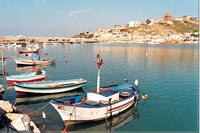 |
PORTOPALO: town of about 3,500 inhabitants in the province of Syracuse and is the largest city in southern Sicily. Historically it was the country where the Allied troops landed in 1943. It is a fishing village that lives for fishing. From the point of view of tourism, Portopalo offers very interesting itineraries. The nineteenth-century church of San Gaetano, the Castle Tafuri and the old trap is the most visited attractions of the place. From the point of view of nature, in addition to the beautiful beaches, they are part of its territory the Isle of Currents, where cross the Ionian Sea and the Mediterranean, and the Island of Capo Passero where stands the castle of Charles V. |
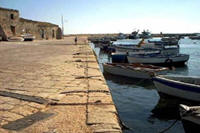 |
MARZAMEMI: It is a seafaring village of the municipality of Pachino. The village was established around the fishing port, central place of the town. Marzamemi is a charming village that takes us back in time, thanks to its defined mainly by small houses of fishermen. His tuna was built by the Arabs during their domination in Sicily. Near the quagmire Morghella, supposedly has developed the ancient city of Ichana dating from the late sixth century BC In 1752 they were built the palace of the Prince of Villadorata, owner of the historic center of Marzamemi, and the church of tuna. |
| SPIAGGE E LIDI | |
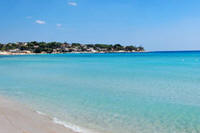 |
FOUNTAINS WHITE: which is less than 15 km from Syracuse, the Fontane Bianche beach shows white beaches lapped by clear blue sea. LIDO DI AVOLA: the seafront Avola runs through the city. The clear, blue sea washes the beaches of golden sand. LIDO DI NOTO: Noto is not only the city of the Baroque, but a few kilometers from the historic center offers us a coastline with golden beaches and clear sea. Calamosche: It located between Noto and Pachino, the beach Calamosche part of Vendicari, a beautiful place with a beautiful sea. |
| EVENTI | |
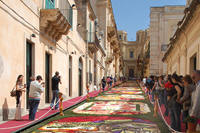 |
FESTA SANTA VENERA: It is celebrated at the Avola utlima Sunday of July. FEAST S.SEBASTIANO: Avola to the second Sunday in May. FEAST S.CORRADO: February 19 in Noto celebrates the patron saint of the city. INFIORATA: Floral Noto event in the third Sunday of May. FESTIVAL SAN LUIGI: Rosolini to the first Sunday in August. FEAST OF THE SACRED HEART: third Sunday of September to Rosolini. Medfest: Medieval event in Buccheri, in the province of Syracuse. FRONTIER CINEMA FESTIVAL: Marzamemi between July and August. WHITE NIGHT: Avola in the first days of August. |
